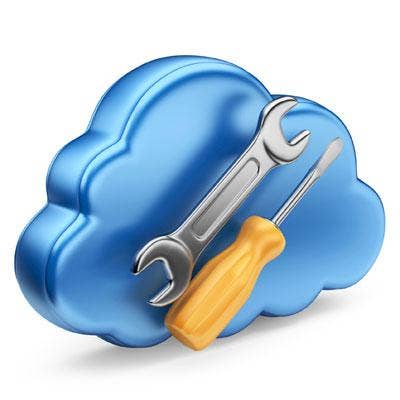8 Tips For Successful Cloud Migrations

Getting It Right
Although the cloud dominates much of the current industry dialogue, persuading customers to adopt the cloud is often dependent on your ability to help the customer feel secure with the process of migration. Intermedia, a large hosted Microsoft Exchange provider, has distilled a variety of key points that are aimed at partner success and customer satisfaction. CRN spoke with Jonathan McCormick, the company's chief operating officer, who walked through Intermedia's advice.

Communicate Your Level Of Migration Experience
Making sure customers are aware of a company's extensive migration experience can go a long way toward building that necessary comfort level. That is assuming, of course, that the company has already got experience in hand. If not, it's probably best to demonstrate the company's knowledge of all the technical intricacies involved in the migrations. These would include the importing of legacy data so that users can seamlessly access older messages and respond to them as though they were received in the new account. "If you're setting up a lot of mailboxes, a number of them are going to be a little different, coming from different servers or machines with different operating systems, and so on," said McCormick. "It's a learning process and it takes quite a few of them to learn what you didn't know from the beginning."
{C}

Budget Your Time And Effort
There's an old saying that everything takes longer than expected. This is often the case when it comes to account migrations. According to Intermedia, the average migration takes 25 days.
"A lot of it is dependent upon the size of the customer, and how they are split up into different geographic locations or other segments," said McCormick. "There are a couple things that are really time-consuming. The first one is the upfront clean-up work because migrations pose an excellent opportunity to clean up your Active Directory before moving everything over. Purging old users and getting rid of all the things the customer no longer needs is a process that can often take about a week. Then, you get everything set up in preparation for the cut-over date, which is also a lot of work in getting everybody up to speed."

Use The Right Tools
Tools and other forms of automation can often go a long way toward enhancing the efficiency of migrations, especially in circumstances involving large numbers of users and multiple sites. In the case of Intermedia, the company has developed a migration wizard that leverages a super-user account. "This enables our engineers to log into the customer's system and pull a copy of their Active Directory infrastructure and then import it directly into their system for the new account," said McCormick. "The tool can then pull data for each of the users, creating all of the user accounts and distribution lists. The tool can also set up mail filter redirection and simplify configuration for the cut over. We also use a single sign-on tool as well as an Outlook profile helper."

Setting Price
Setting price is always an art as much as it is a science. Popular strategies include competitive price comparisons, as well as sounding out the customers to get a sense of what the market will bear. Because Intermedia offers its services on an ongoing basis, the company provides the migrations as part of the contract. "We bundle it as part of the mail service that we provide," explained McCormick. "We do not charge for on-boarding."
In most cases, the best advice is to consider the on-boarding line item as part of the overall value proposition and make pricing decisions accordingly.

Minimize End-User Impact
According to McCormick, one of the keys to keeping the migration easy for the end user involves working closely with the customer's IT people. By combining both companies' expertise, it becomes much easier to evade potential stumbling blocks. "Ideally, the end user should merely need to log out of Outlook and then log back in, and the new profile should be up and running," he said. "Be ready to synchronize wireless devices so they can access their mail quickly and easily on any device. Also, at no point in time do we put them in a situation where we can't go back, if necessary. If anything is not right, they can go back to their old Outlook profiles pretty easily. The key is to avoid methodologies that put you at a point of no return."

Anticipate Network Saturation
Cutover to the new system involves a substantial amount of network resources necessary to download all the data. "So if you cut over 300 users at one time in the middle of the day, the network is going to be sluggish for a couple of hours," said McCormick. "So you have to think about the loads that are going to take place and compare it with the bandwidth and throughput that's available." McCormick added that the key to success is usually about timing, making sure that such activities are not planned during periods of peak loads.

Use Multiple Pipes For Failover
Intermedia recommends customers establish at least two interfaces to support Internet access. The idea being that if one interface fails, the backup will most likely be available to take its place. "If you lose your Internet, you've lost your mail, and you probably lost your phone system, and a lot of other things as well," said McCormick. "It might not be realistic for some of the smaller companies to have multiple pipes based on the cost models, but as soon as you can afford it, your business really should have redundant Internet access. The Internet is so critical to everyone's business."

Excel In Support
Good support is an important quality in just about any technology-related service, and cloud migrations are certainly no exception. McCormick says that when companies are dealing with something as critical as a customer's ability to communicate, the company's ability to set proper expectations and establish a customer understanding of the underlying processes will be key to its success. "We try to make sure that the customer has all the information, and that everyone who needs to be contacted will be contacted," he said. "A lot of times, the customer might not be fully prepared, so the first call may be introductory in nature. But, we want them to understand the migration process, so we go through all the steps on the front end, and make sure we are available to them on the back end, in the event that any issues or questions might emerge."